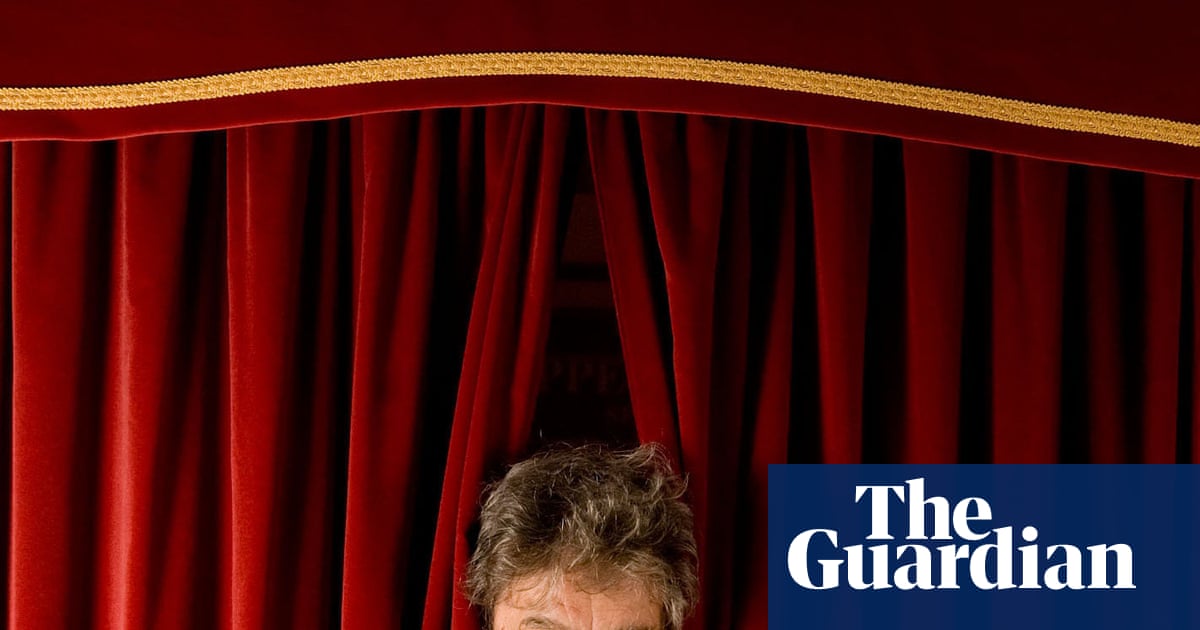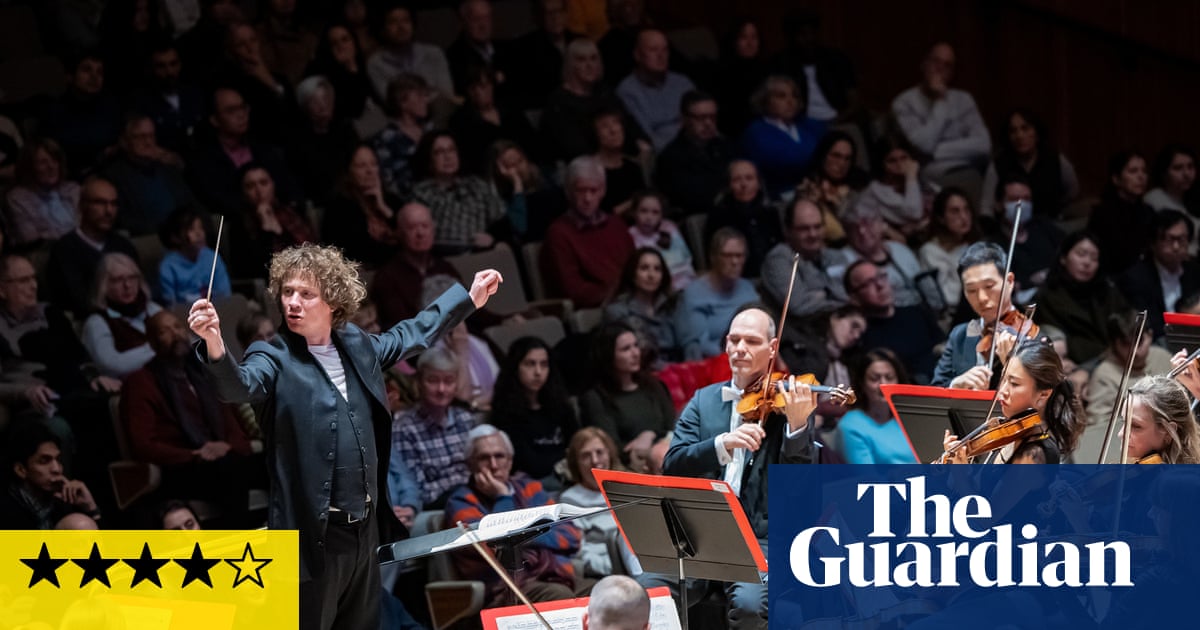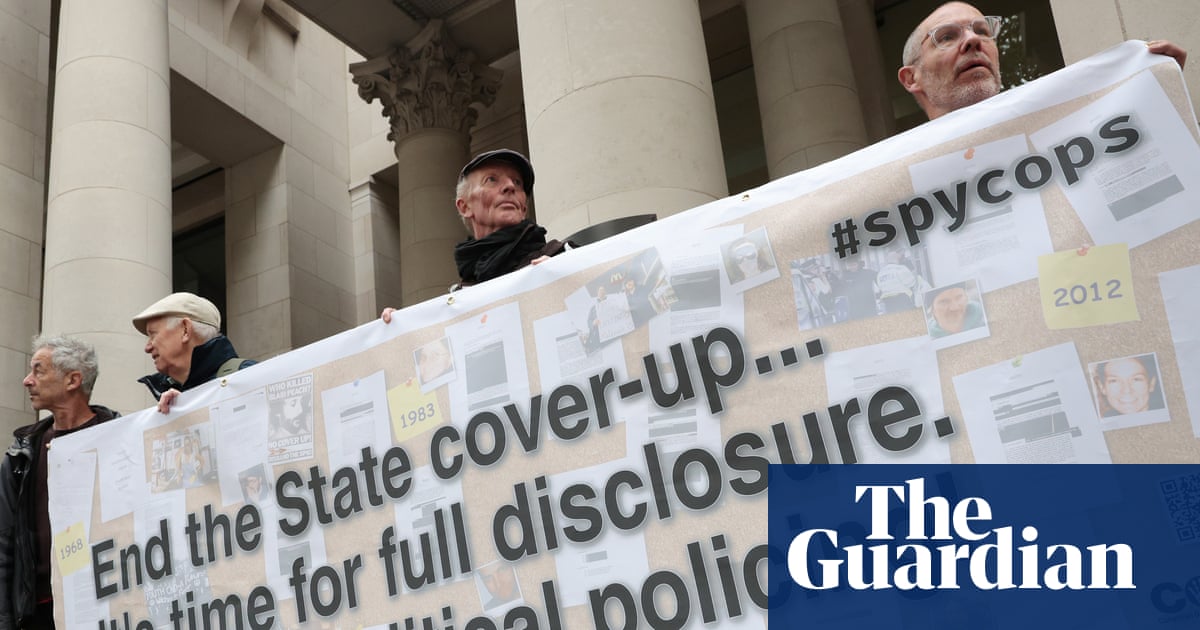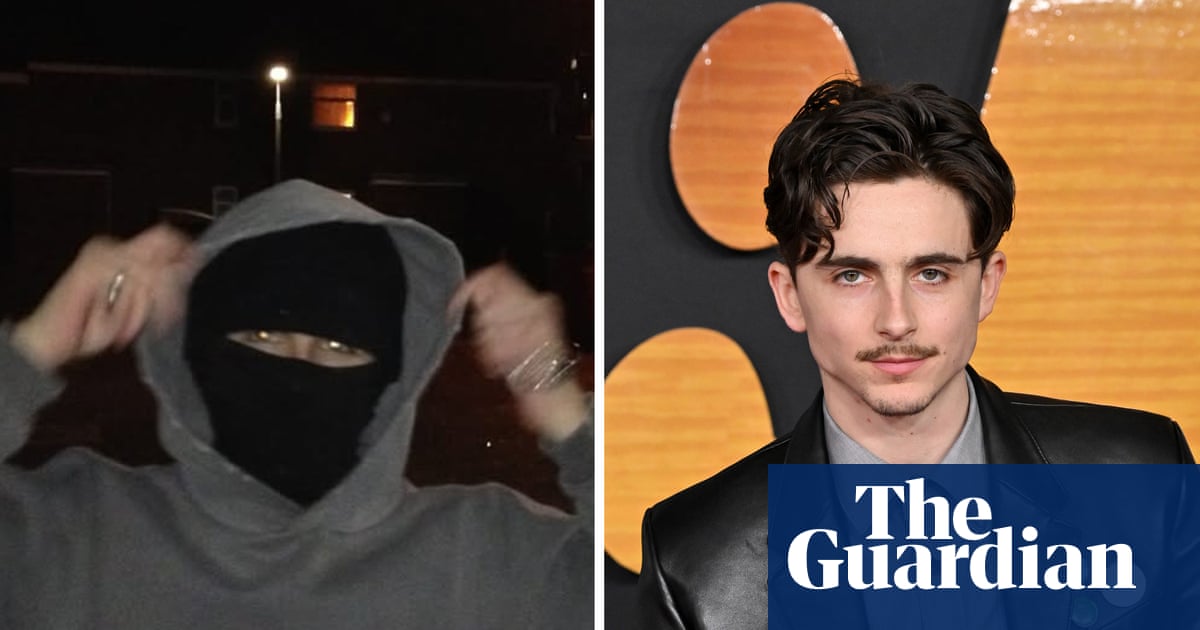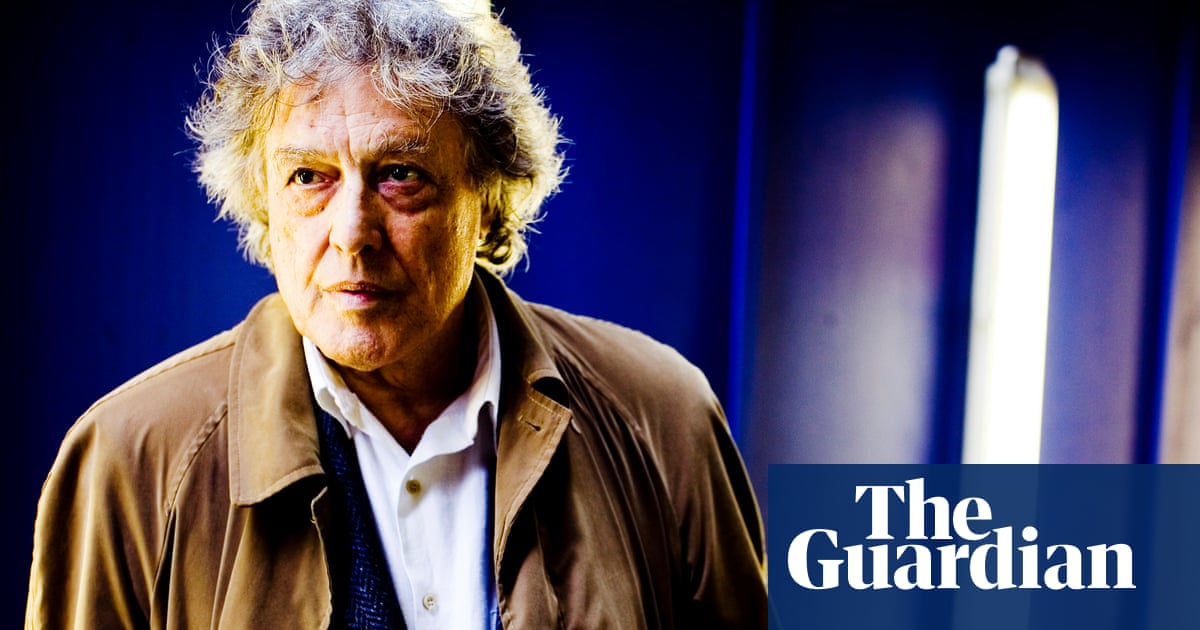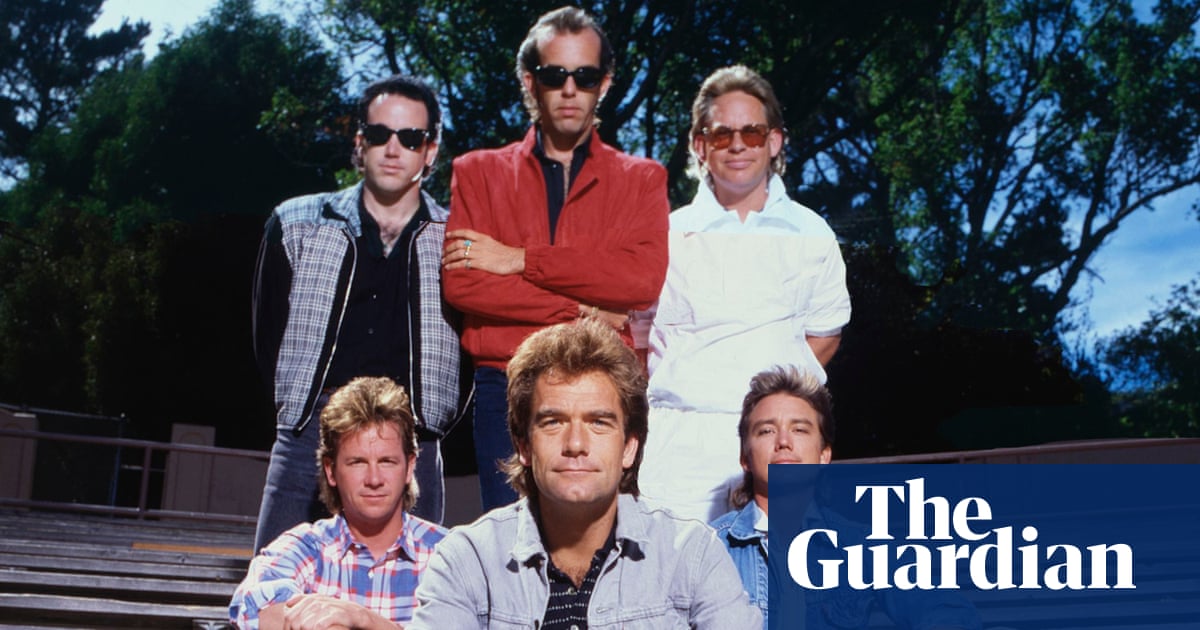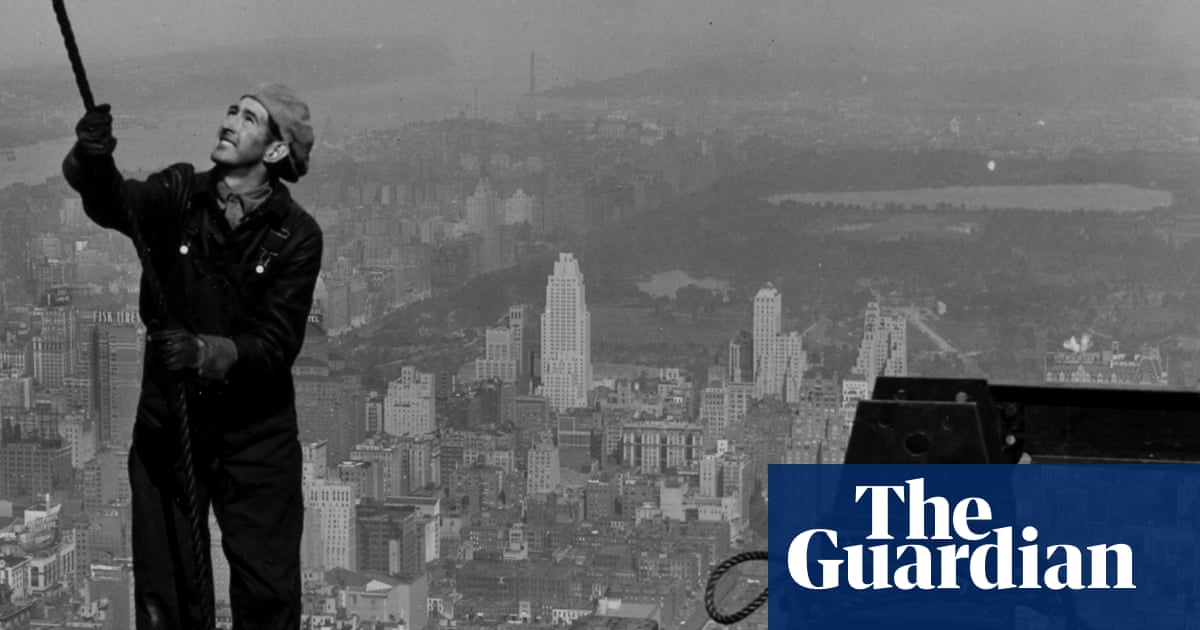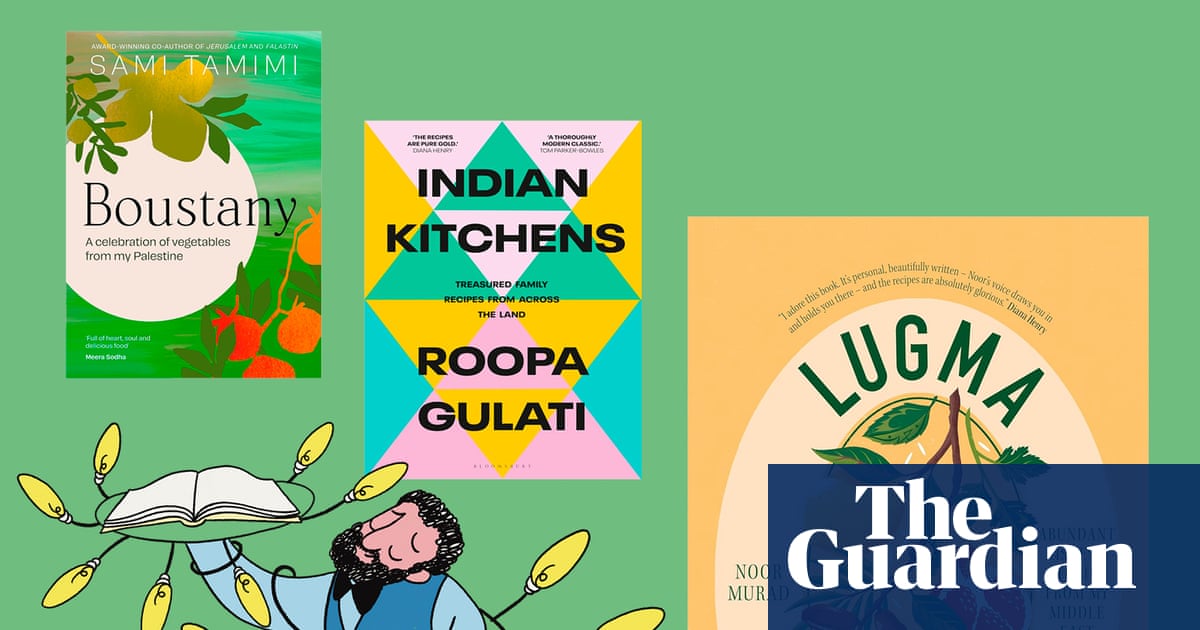Cosey Fanni Tutti
Bernard Herrmann – The Murder (1960)
Scary music actually excites me, but the piece that most sends shivers down my spine is the music in the shower scene in Alfred Hitchcock’s film, Psycho. I’ve seen it numerous times and even though I know what’s coming, the stabbing knife synched with Bernard Herrmann’s score always freaks me out.
More recently, I went through a phase of watching Japanese and Korean horror films. I had to stop watching them because they weren’t good for my heart condition, but none of them affected me like the Psycho shower scene. Music set to visuals intensifies the audio experience and other senses. Surrendering to the film-maker’s interpretation of what the sound represents holds you in a heightened state of expectation of the unexpected, which really is scary.
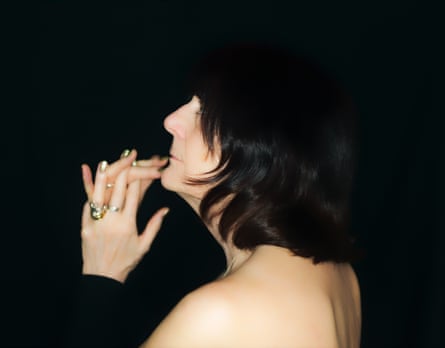
Stephen O’Malley, Sunn O)))
Abruptum – Evil (1991)
I bought this infamous seven-inch from my friend Odon in 1992 – he was one of the first people to have DIY living room black-metal discos in the States. We didn’t know what this was or which speed to play it, 33rpm or 45rpm. It’s really messed up, demented, improvised doom/black metal saturated with agony and torture. There were lots of rumours and stories about their now deceased leader Tony Särkkä, known as IT, some of which have since been validated by Dan Swanö, the engineer. Back then, we heard it was a recording of someone named IT being tortured and electrocuted during the vocal sessions.
There are always criticisms when black metal is exposed to the wider world but I believe darkness is infinitely deeper in the light – and the mainstream is far more messed up today than that obscure dungeon of a scene was in the early 90s.
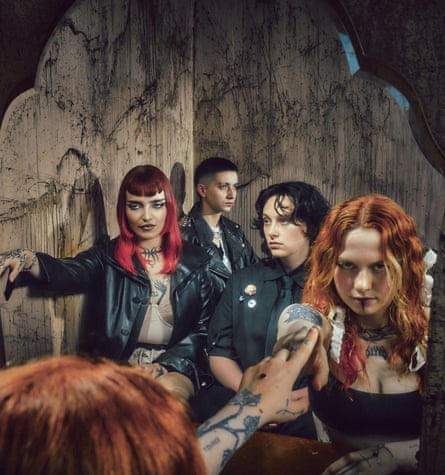
Amy Walpole, Witch Fever
Sloppy Jane – Jesus and Your Living Room Floor (2021)
I was drawn to Sloppy Jane’s album Madison because it was recorded in a cave. Jesus and Your Living Room Floor is open to interpretation, but I think it’s a song about loneliness and wanting to be remembered after you die. Some of the lyrics describe dying in really grotesque ways, but then there’s more mundane imagery such as a plastic horse.
Having been brought up in a charismatic Christian church – essentially, a cult – until I was 16, I can relate to the religious aspects. I find the song cathartic. It’s a ballad, essentially, but dark, gothic and sad and I love the strange, underground atmosphere. I listen to it all the time.
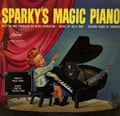
Stephen Mallinder, Cabaret Voltaire
Henry Blair – Sparky’s Magic Piano (1947)
This was part of a series of mini musical plays featuring a little boy, Sparky, who was trying to master the piano. I heard it when I was about five, more than a decade after it came out. The BBC used to run Children’s Favourites on Saturday morning radio, playing music that grownups felt kids would like, often 40s and 50s novelty tunes, which I found deeply disturbing. Even now they trigger a PTSD response.
Sparky’s Magic Piano fascinated me and terrified me. When Sparky’s mother was out of the room, the piano would start talking to him in a voice produced by a Sonovox, a primitive vocoder. I think that was the catalyst for my ongoing preoccupation with manipulating voices, but as a five-year-old I was convinced it was a small boy trapped inside a piano for eternity.
TheOGM, Ho99o9
Herbie Hancock – Paint Her Mouth, from the Death Wish soundtrack (1974)
My dad was a big fan of action films, so I saw Death Wish when I was a kid. We lived in an urban environment that was kinda like the New York depicted in the film, with gangs, muggings and home invasions, so I could relate to it. To me that was much scarier than Halloween or Nightmare on Elm Street.
Later on in life I stumbled across the soundtrack, and if you hear it in isolation, it’s truly chilling. Herbie Hancock’s a genius but what I love about this is he gets so much out of so little – like the little snare drum sound or minimalist synthesiser, an echo or some strings. It just feels like darkness, or like someone’s following you, so you need to clutch your purse or have your keys out when you get to your door.
Tatiana Shmayluk, Jinjer
Agatha Christie – Опиум для никого (1994)
When I was young, scary cartoons or movies didn’t scare me much. Then, after my older brother introduced me to rock music, I listened to this one afternoon in winter when my parents had gone to work and really got the chills. It’s Russian darkwave. The title translates as Opium for No One. It’s more gothic and melancholy than horrifying, but the words are really dark. “I paint my lips black with shoe polish … the stars shine beautifully at me and hell looks attractive.” Then: “Kill me, kill yourself, you won’t change anything.”
At nine years old I didn’t know what it was about and painted pictures in my head. I was born in Russia but grew up in Ukraine, and in those countries in the 90s the music got pretty depressing. Now, I live in California. All my friends have left Ukraine, and when I call my mom, sometimes I hear bombing.
Taylor Momsen, the Pretty Reckless
John Williams – Main Title, Theme From Jaws (1975)
I was 10 or 11 when I first saw Jaws and the film would not be what it is without John Williams’s theme. For me, it’s the king of horror themes because of its simplicity. With just two notes and slightly varying the velocity, it creates incredible anxiety. You sense that something is coming, and the two notes replicate the primal simplicity of the shark’s mind.
The difference between Jaws and zombie or monster films is that the threat – a shark attack – is real. I love to swim. For a long time I had a house in Maine and would swim in the ocean for hours. God forbid, if that music’s in your head and something touches your foot you start to freak out. You can’t not think: “Shark!”
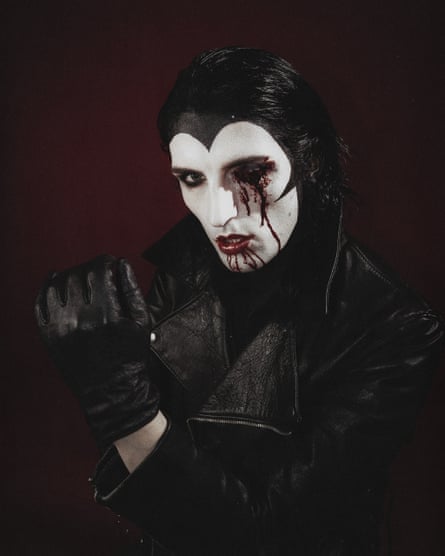
William Von Ghould, Creeper
Nick Cave and the Bad Seeds – Stagger Lee (1996)
I remember bringing the Murder Ballads album home in my 20s and my housemate telling me to turn this track off because it was scaring him. Stagger Lee is sort of an update on an American folk ballad, but it’s nothing like the original. It’s extremely graphic, but the scary thing is that the villain is human. Cave is inhabiting a murderous character, but is very convincing. It’s got that crazy, violent line: “I’ll crawl over 50 good pussies just to get one fat boy’s asshole” – it’s probably more shocking now than it was back then. Like a great horror film, the song takes your breath away. We play with a lot of dark, Halloween-type bands but nothing’s as convincingly scary as this.
Cassy Brooking (AKA Cassyette)
Ethel Cain – Perverts (2025)
Ethel Cain [AKA Hayden Anhedönia] came up on my Spotify and slowly seeped into all my playlists. Her album Perverts is the most scary modern music I’ve heard, and quite a departure from her previous stuff. The whole album is drone music, with minimal layers, but she lets each sound linger, which puts you on the edge of your seat.
At first I had mixed feelings about it because it’s so genuinely creepy, but her music is infused with guilt and sin and takes you on a journey. It makes me feel deeply, like some sort of exposure therapy. The track Pulldrone reminds me of American Horror Story, one of my favourite TV series, and it’s got the creepiest voice, like a prayer. I love the album, but it’s so terrifying I still can’t listen to it the whole way through.
Jamie Stewart, Xiu Xiu
Diamanda Galás – Schrei x (1996)
In my 20s, a friend introduced me to the album Diamanda Galás did with Led Zeppelin’s John Paul Jones [The Sporting Life, 1994]. On the cover he’s driving a cool classic car and she’s leaning across the hood with an insane look on her face, holding a knife. From that moment I wanted to listen to her. To me she’s one of the most intense musicians in history, but Schrei x is her most extraordinarily relentless and frightening work. It’s a genuinely wild, feral music, all a cappella and live.
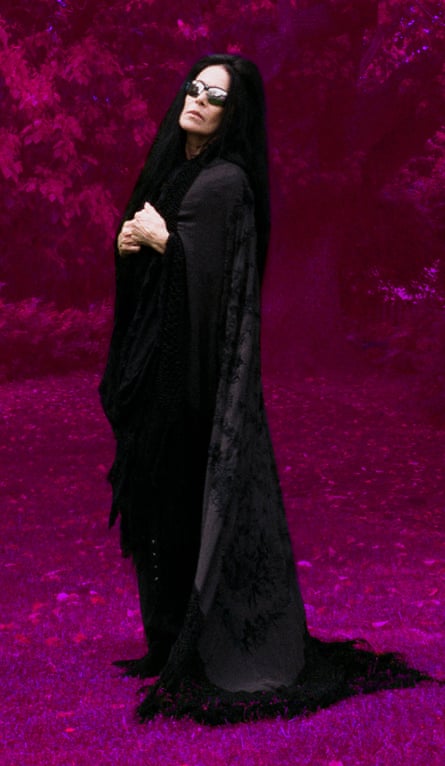
I’m amazed this gut-wrenching use of the human voice happened in a space, with people witnessing it. For a long time when I listened to it I was in disbelief. The other day I listened to it in the gym. It’s a funny record to listen to on the StairMaster.
Diamanda Galás
Iannis Xenakis – Mycenae-Alpha (1978)
This is the first sound work Xenakis created for the Upic computerised composition tool he developed to turn hand drawings into electronic music. As a Greek resistance fighter, he had half his face blown apart by shrapnel and was imprisoned many times. His music is ferocious and difficult to perform but extremely innovative.
The violence in Mycenae-Alpha attracted me instantly. I realised the composer was a master warrior who used music as a flight of harpoons. I had been working on my first vocal pieces and had already performed Wild Women with Steak-knives (the Homicidal Love Song for Solo Scream) [which appeared on Galás’s 1982 debut The Litanies of Satan], so this work was a confirmation that I was headed in the right direction. An experimental singer needs to have 400 screams at her disposal, so Mycenae-Alpha can be a compositional model.
The Mycenaeans were a Greek warrior elite. Their strategy in warfare was unparalleled and their massive walls and architecture were so formidable as to imagine their creation by the hand of a Cyclops. Mycenae-Alpha is as terrifying as the drawings from the giant imaginary hand that composed it.
Sade Sanchez, LA Witch
Krzysztof Penderecki – The Devils of Loudun (1969)
This is an opera by a Polish composer based on Aldous Huxley’s book of the same title, which was based on real events in the 17th century. A load of nuns underwent mass hysteria and were all convinced that they were being possessed by demons. There were public exorcisms and people burned alive.
The story alone is scary enough and you can hear it in the music, such as the way the main nun goes insane. It’s very cleverly done, with organ, flutes, vocal, a choir and crazy effects such as strange laughter and human noises. It’s not easy to listen to – it’s sung in German, it’s unsettling and spooky – but it’s also really beautiful. You really feel you’re experiencing the women’s despair, highs and lows.
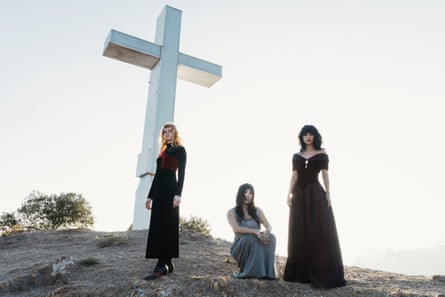
Spencer Charnas, Ice Nine Kills
John Carpenter – Halloween soundtrack (1978)
In terms of musical impact on horror cinema, John Carpenter’s soundtrack to Halloween is up there with Jaws and Psycho. When they were making Halloween, the film didn’t have a score and the reaction was very bland. John said a 20th Century Fox executive told him: “There’s nothing scary about this movie.” Then, when it came out, the same executive called him and said it was tremendous, and John explained that all he had done was add the score.
If you listen to Bernard Herrmann’s score for Psycho or Harry Manfredini’s for Friday the 13th, they’re orchestral. The Halloween score is very stripped down, usually no more than a synthesiser, but it’s really unsettling. It conjures up the fear of the unknown, or unseen; an unsettling feeling that something’s wrong.
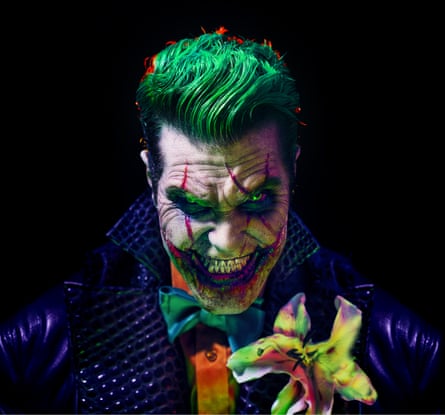
Takiaya Reed, Divide and Dissolve
Shostakovich String Quartet No 8 in C minor (1960)
My father played this in the house when I was a child and I was terrified. Much later, I read about Shostakovich’s experience of going to Dresden in 1960 – one of the most heavily bombed cities in the second world war – and feeling the weight of genocide and fascism. He wrote this in three days, like an outpouring. I realised I’d been terrified as a child because I’d picked up a sense of dread or fear from what he was writing about. It has dynamics and energy as well as the power to make people weep. I still find it very moving and uncomfortable, but it’s great to feel.
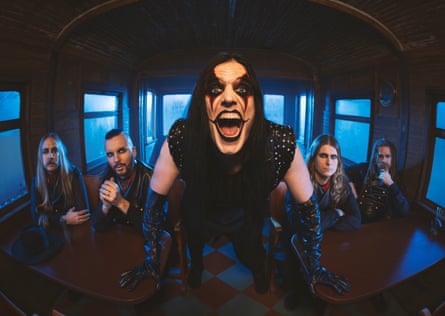
Johannes Eckerström, Avatar
Sumio Shiratori – Moomin soundtrack (1990)
As a child I was always drawn to scary things, such as Michael Jackson’s Thriller video with zombies or reruns of The Addams Family or The Munsters, and I loved the songs. Nothing freaked me out like Moomin, the Japanese anime TV series of the Finnish children’s book. It was basically horror for children, featuring a weird ghostly figure called Mårran (the Groke), who radiated cold and had a diabolical smile. However, the author had a great respect for children’s intellect and used her to represent themes of loneliness and loss.
The song worked a bit like the theme from Jaws – as soon as you heard the double-bass notes, you knew trouble was coming. The synthesisers are very of their time, but to hear it as a child was to be paralysed by fear. Much later, you reach a point where darker things stop being unpleasant and start to feel exciting.
Creeper’s album Sanguivore II: Mistress of Death, Witch Fever’s Fevereaten and Avatar’s Don’t Go in the Forest are all released today (31 October). Sunn O)))’s EP Eternity’s Pillars is out now.
Listen to the artists’ selections below via Spotify, or use the playlist URL to transfer it to Apple, Tidal or other services.

 1 month ago
20
1 month ago
20





